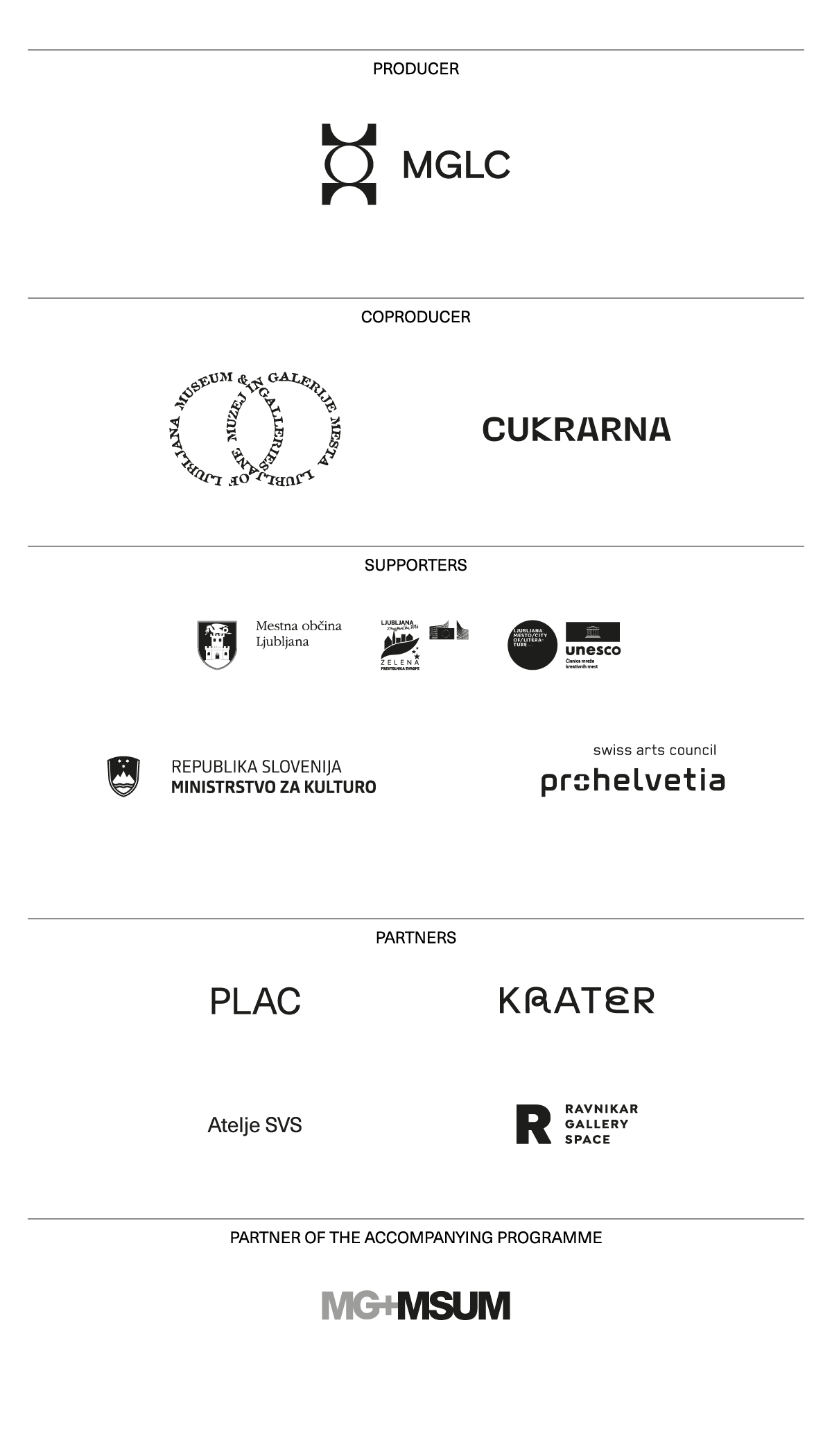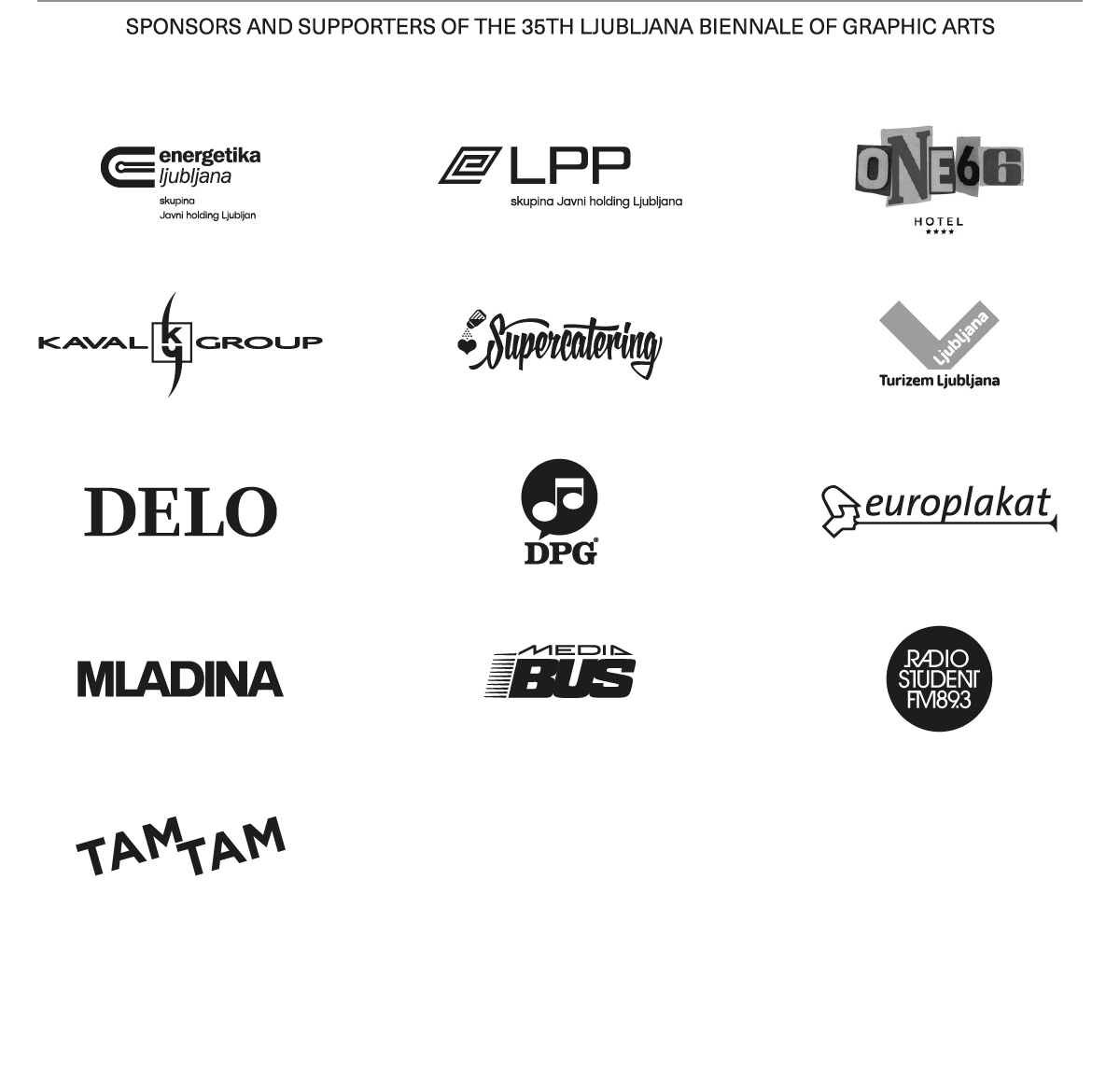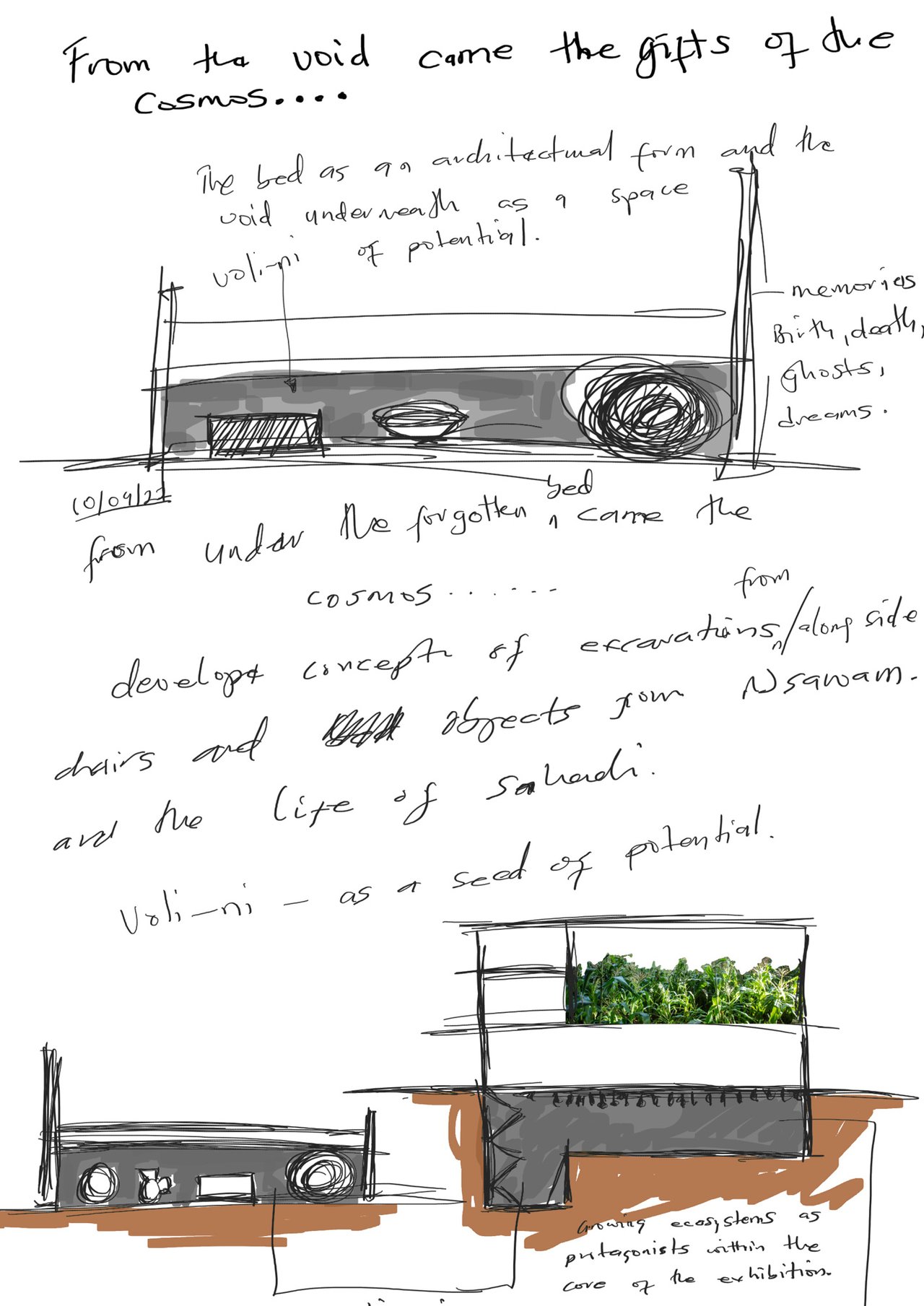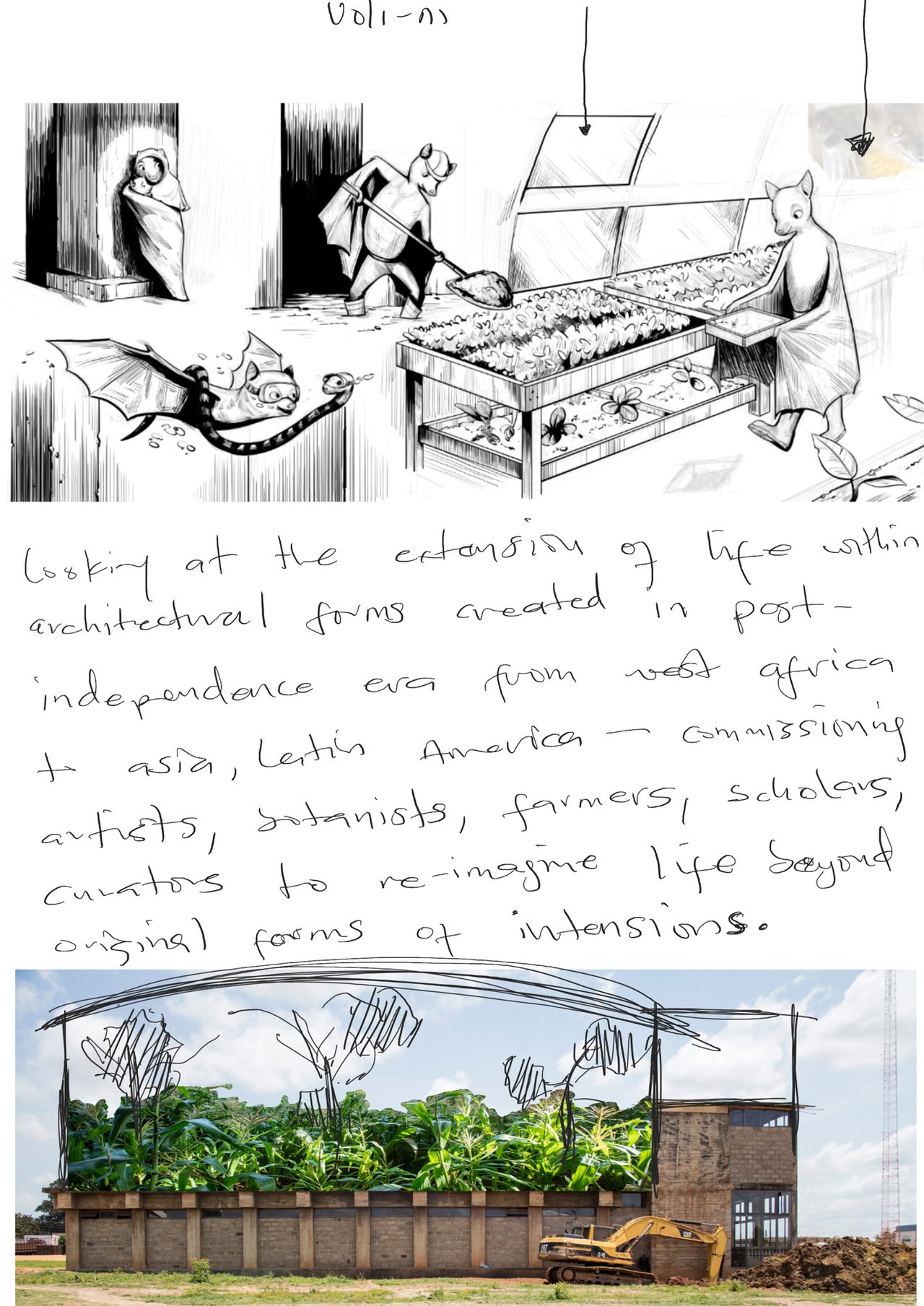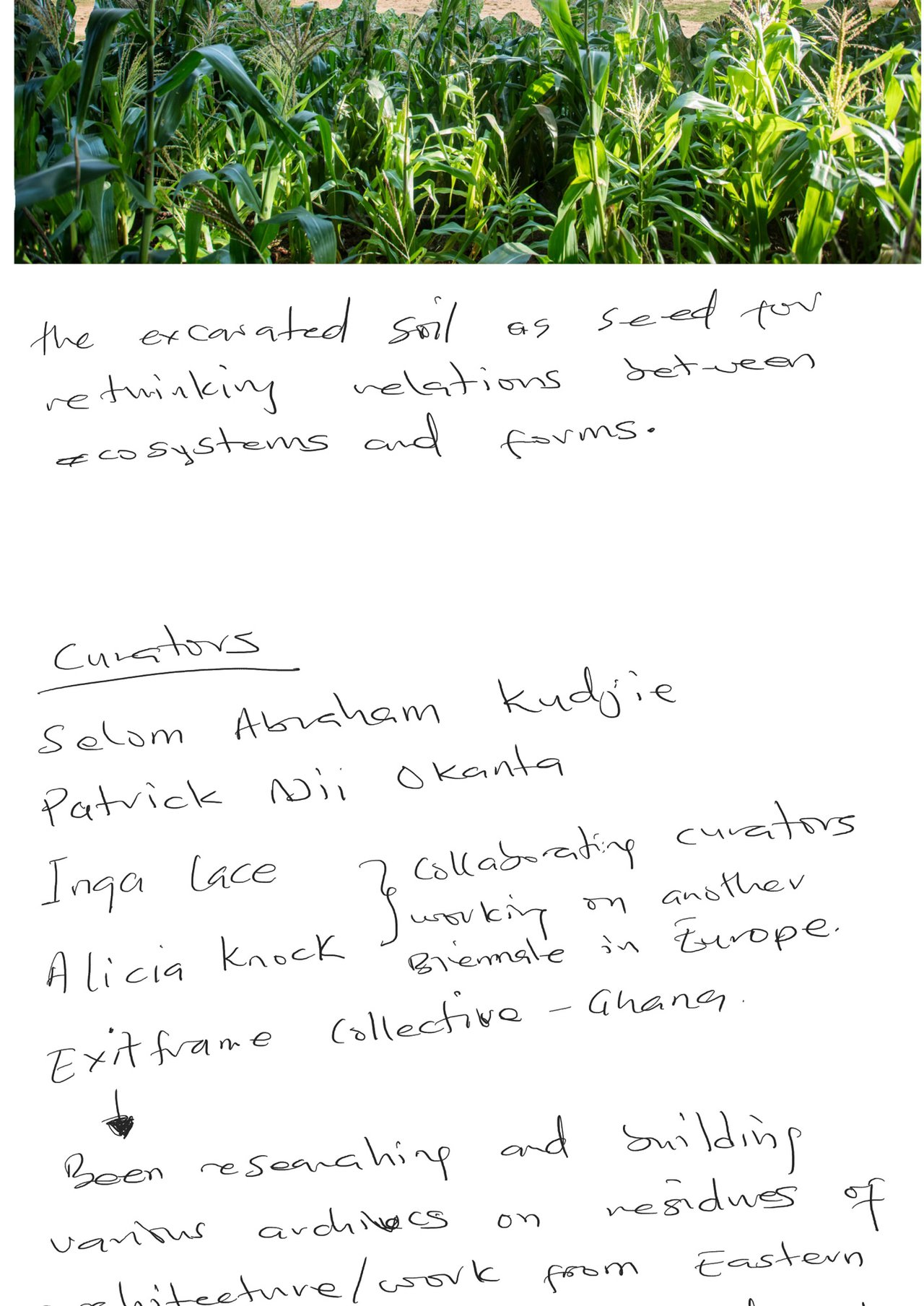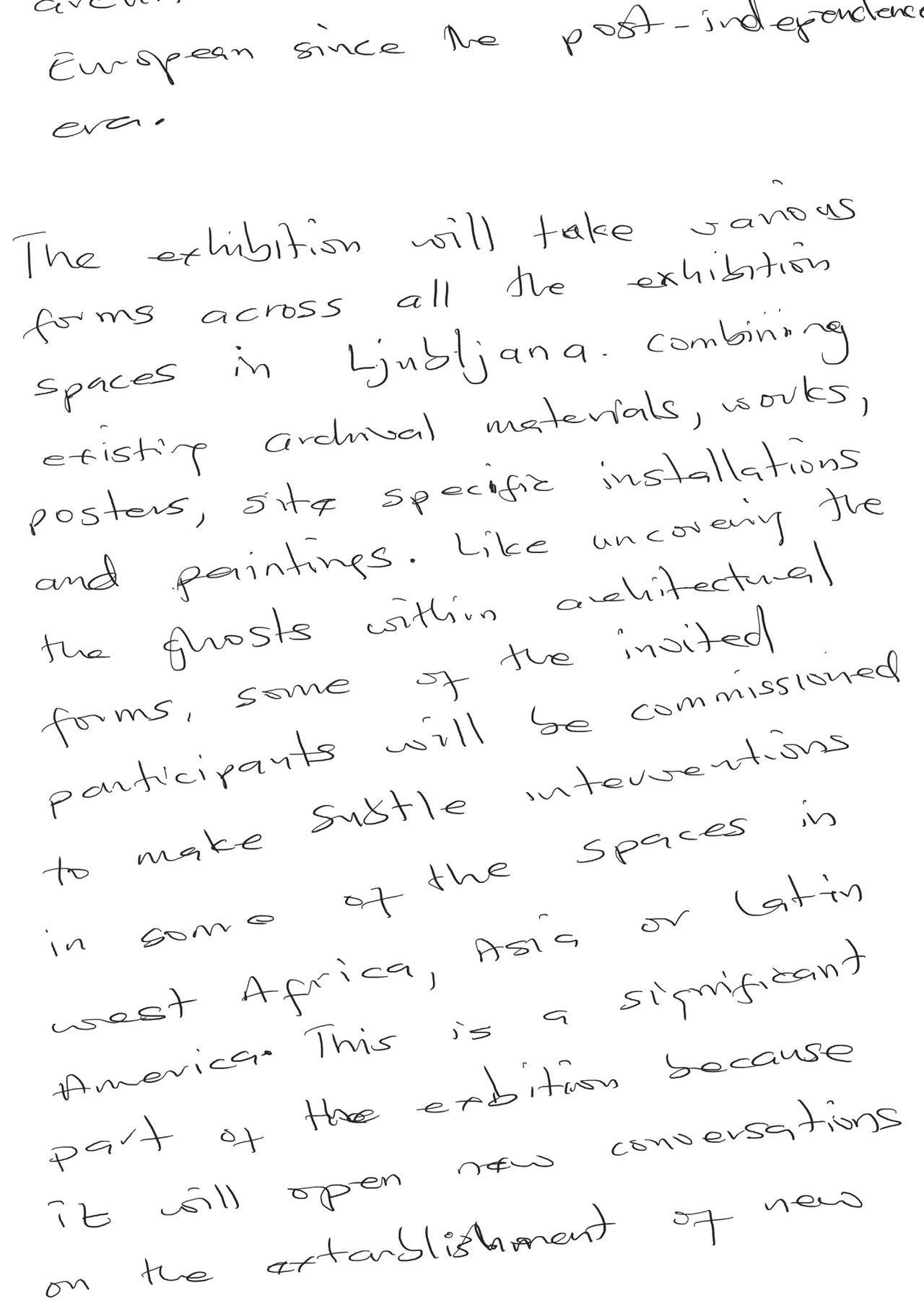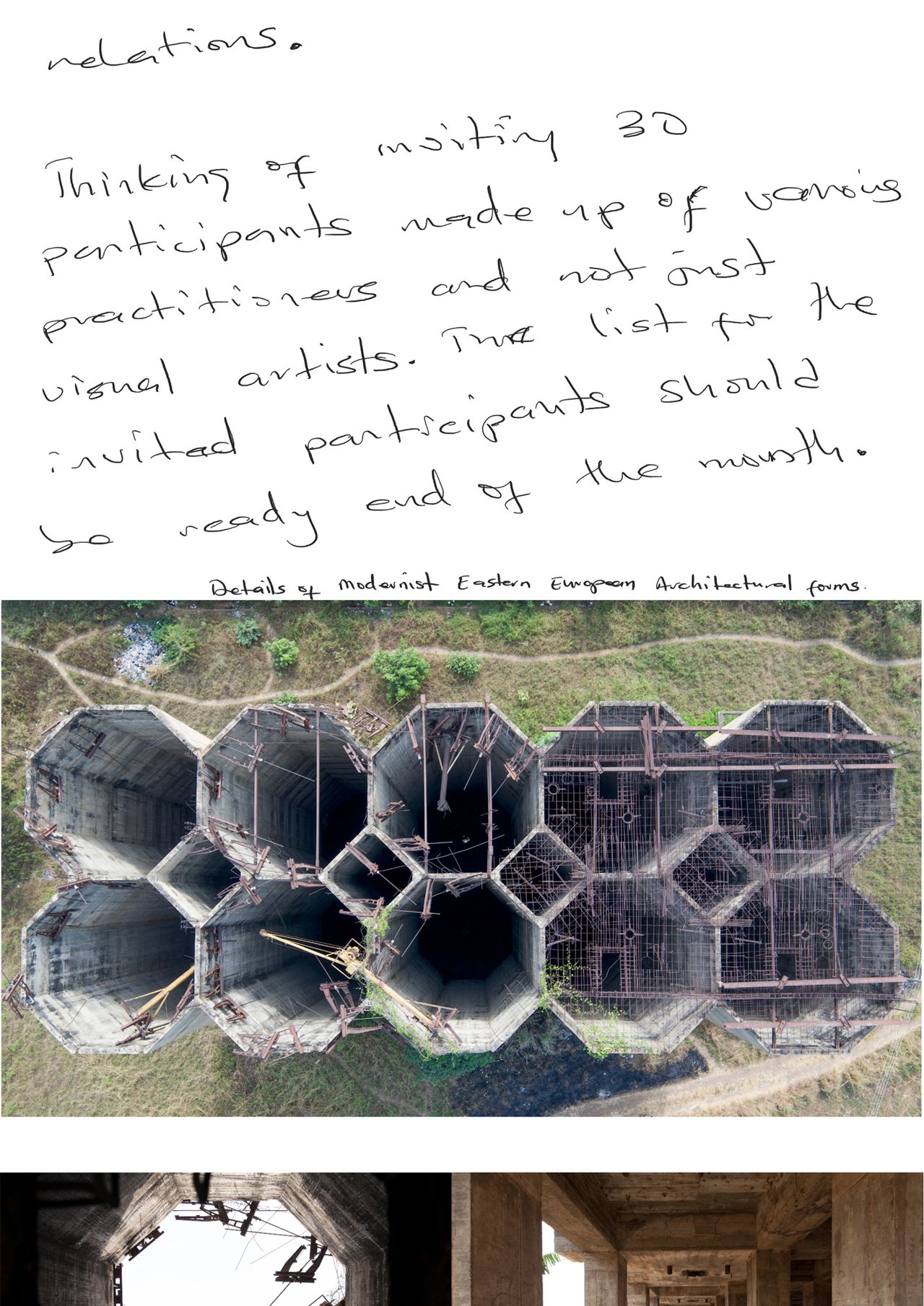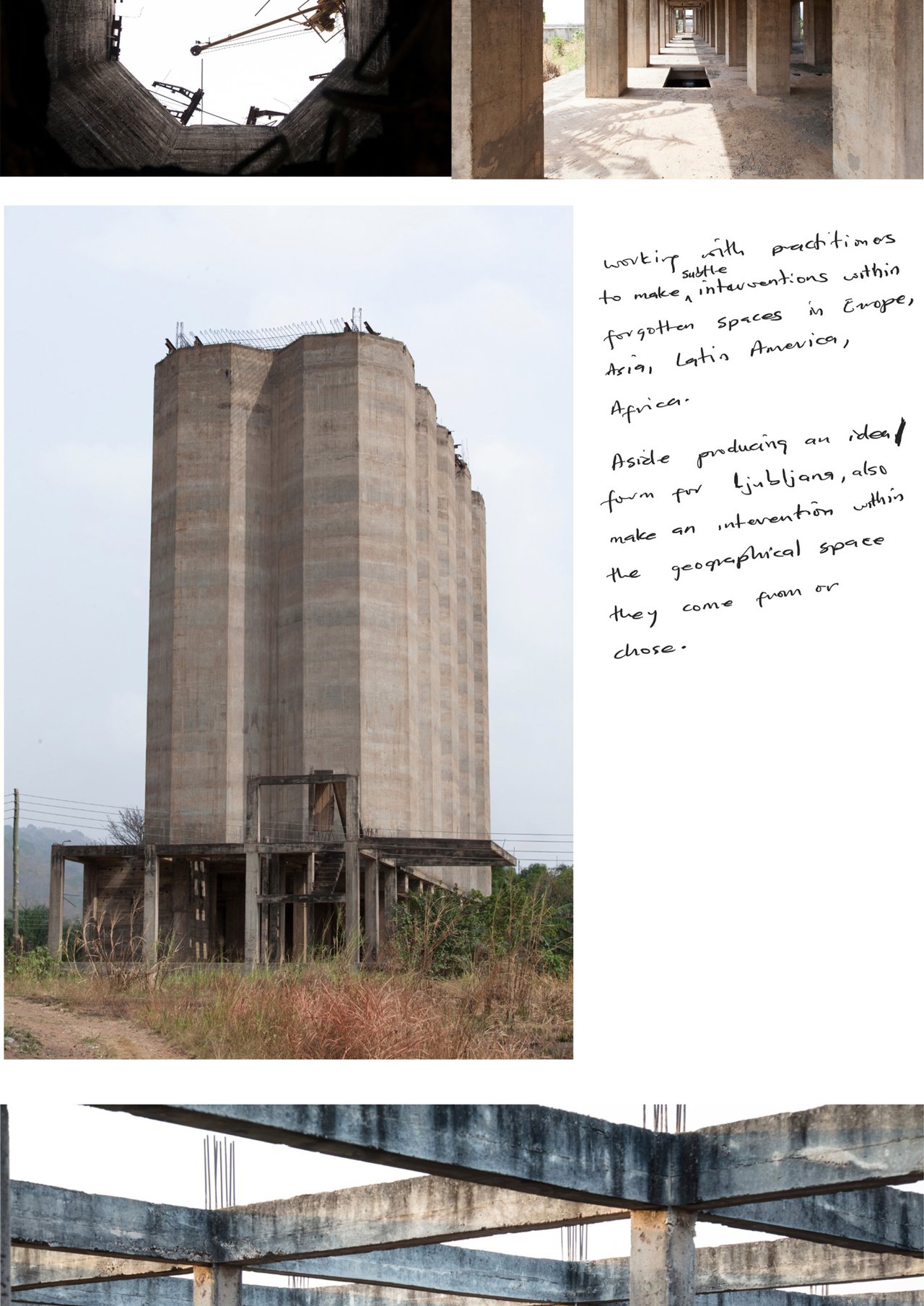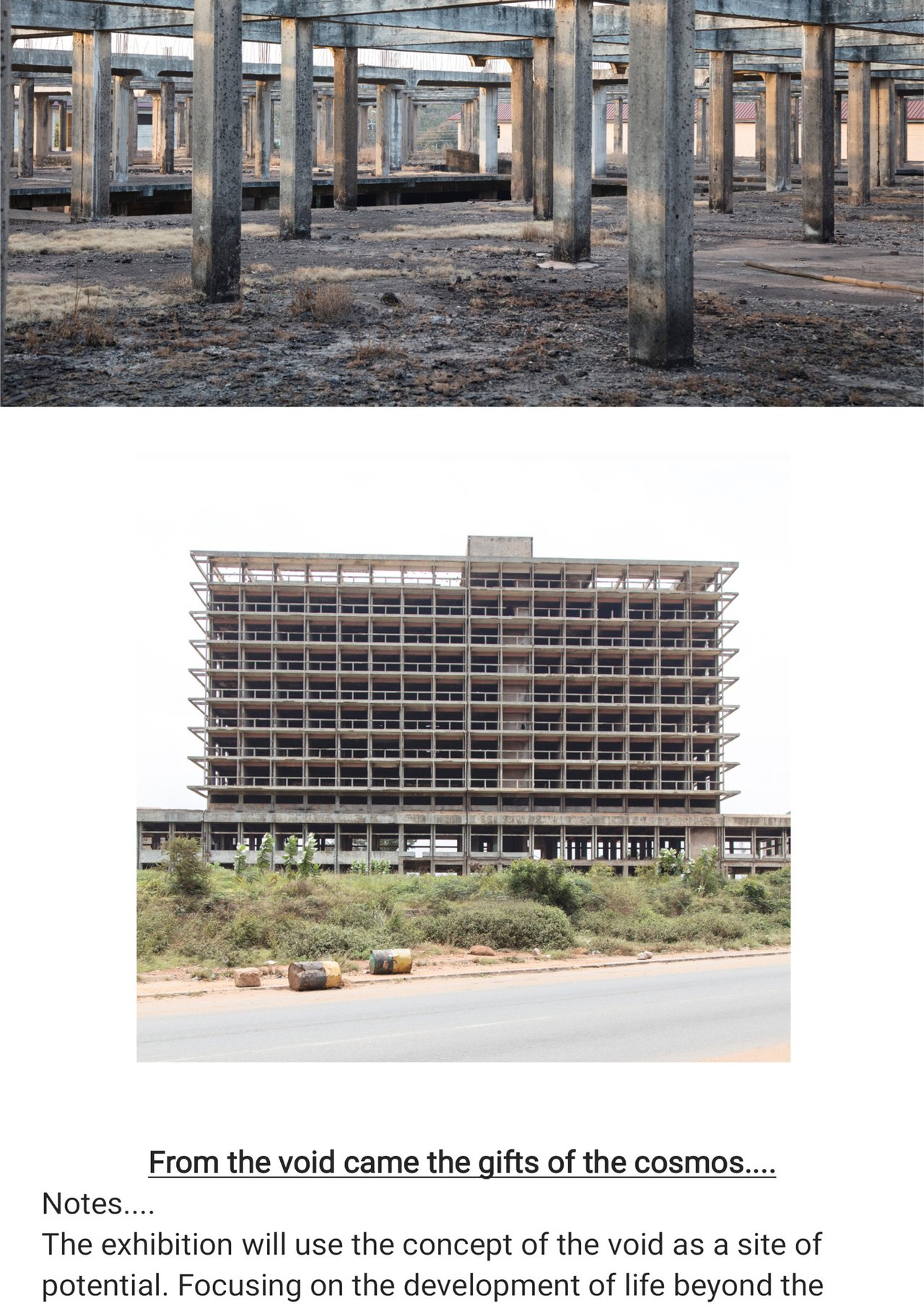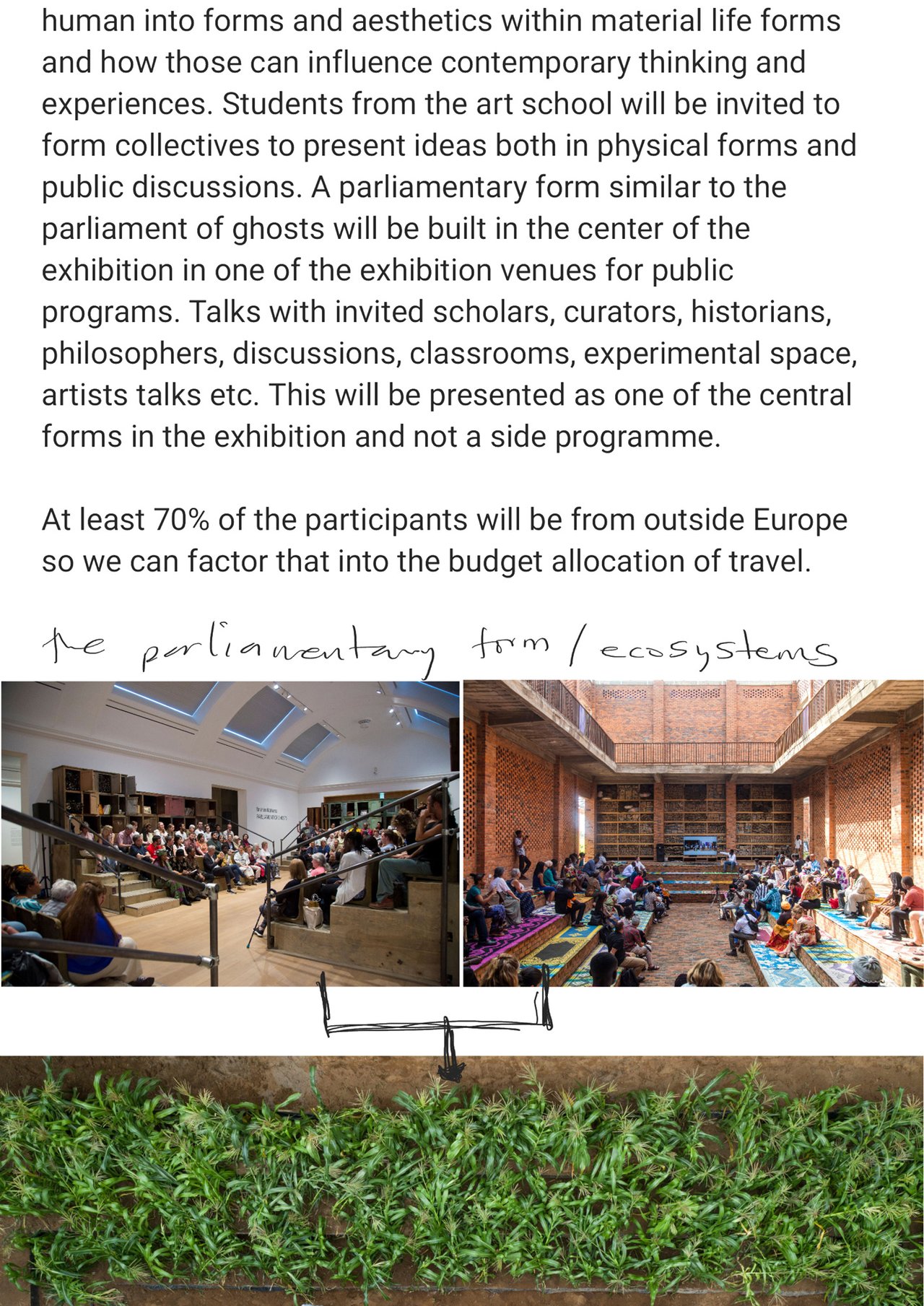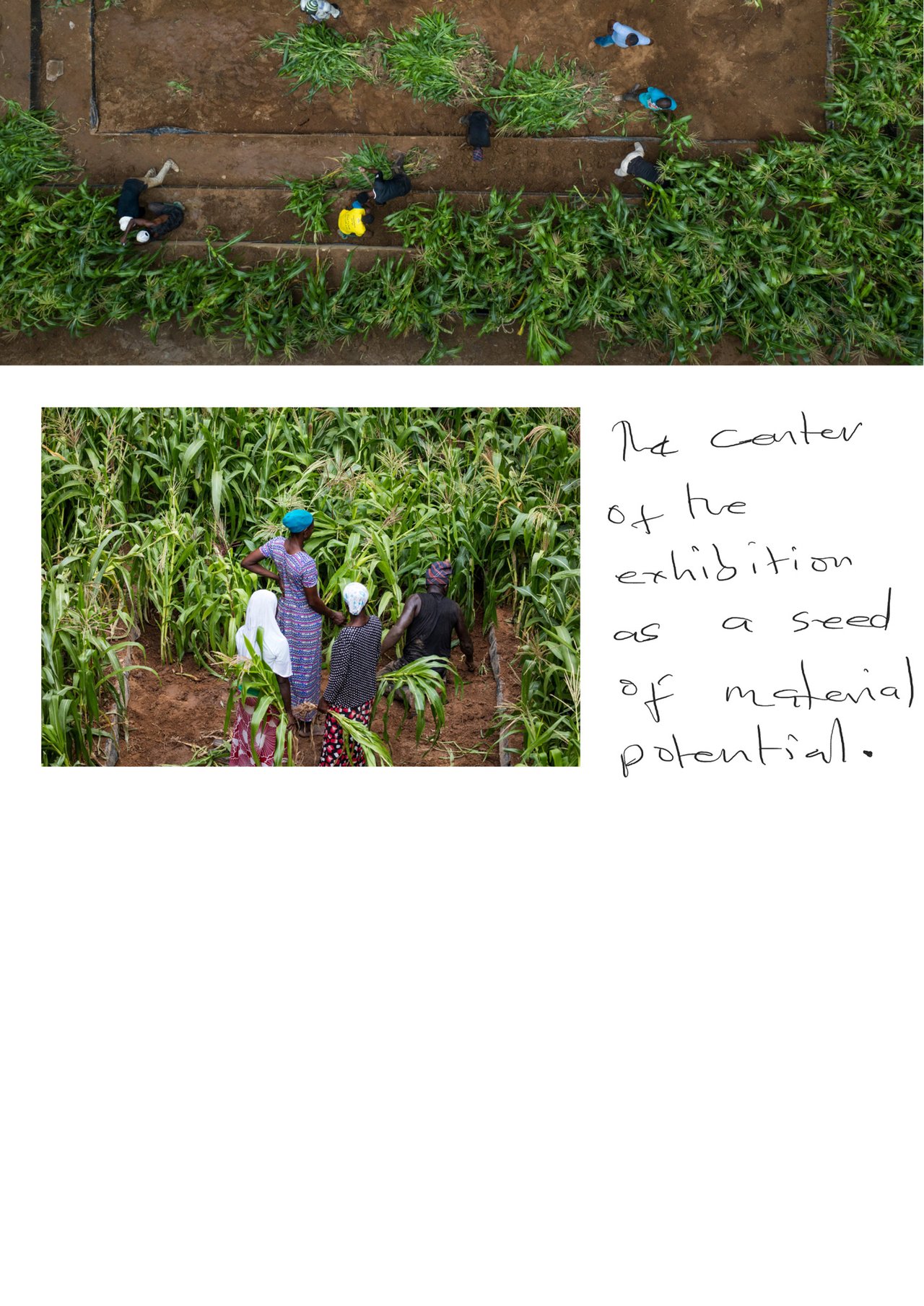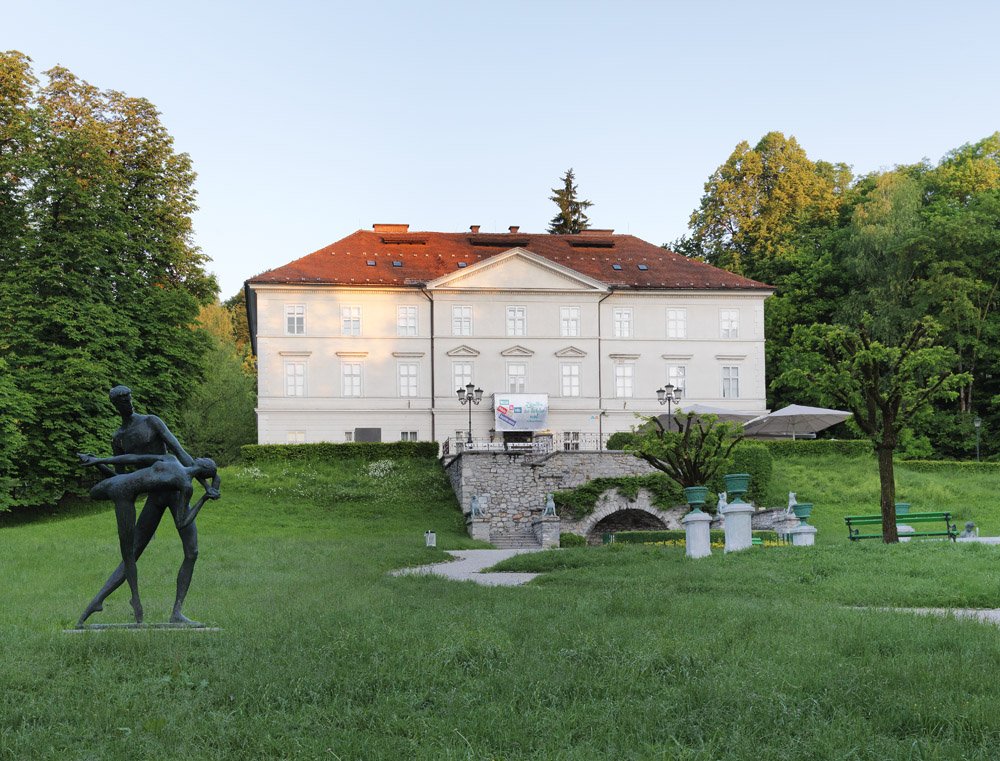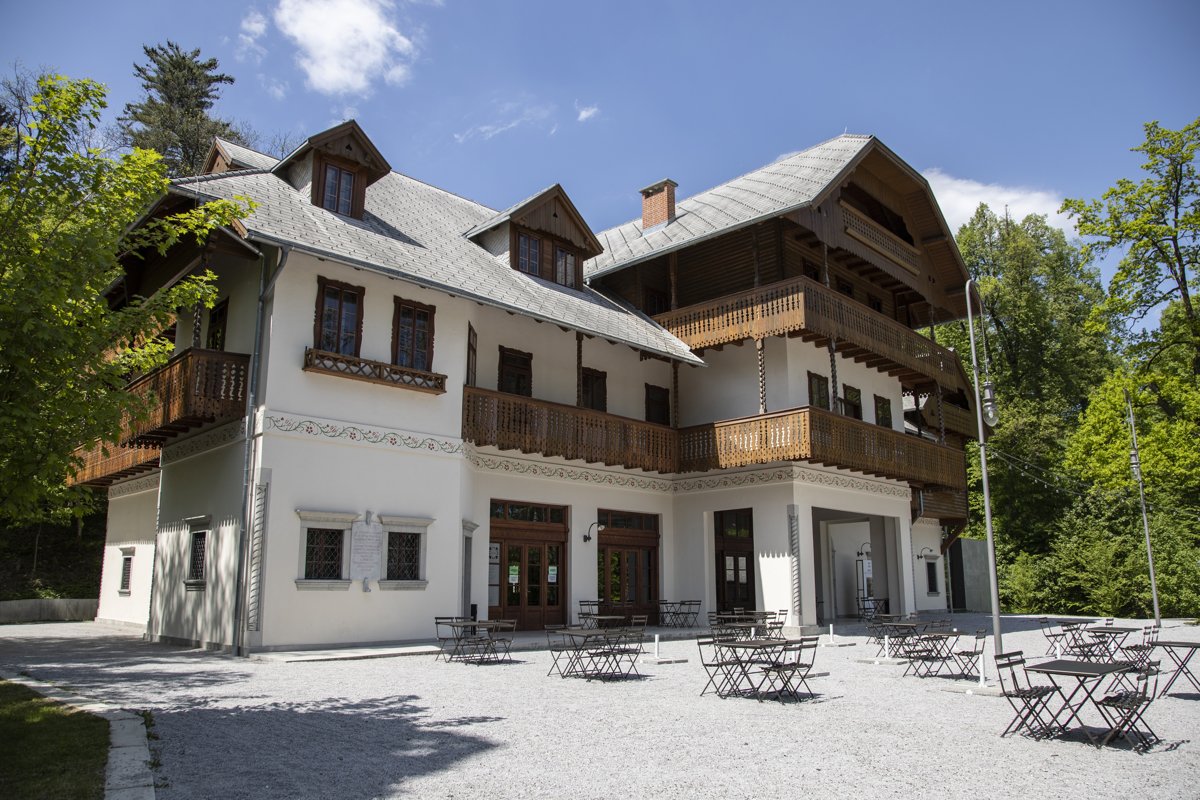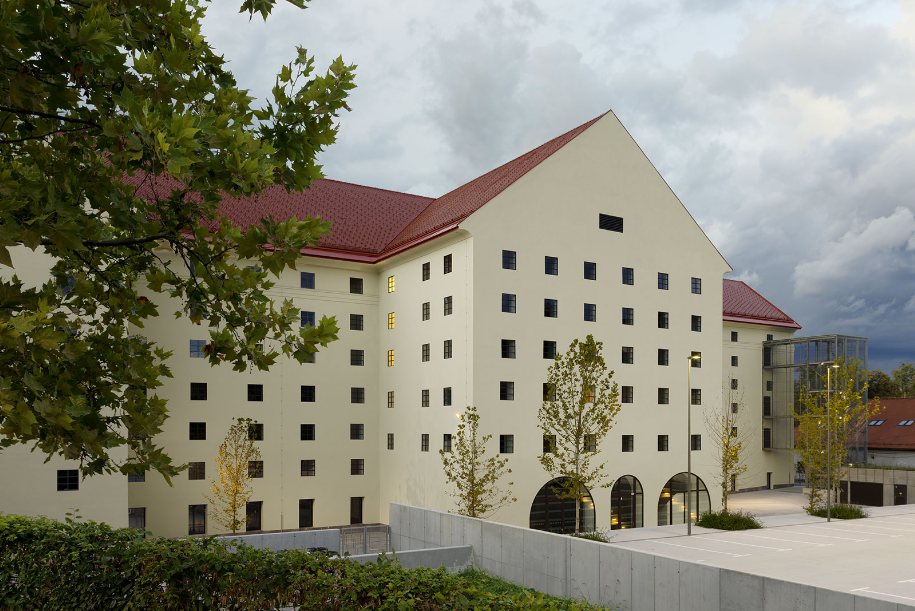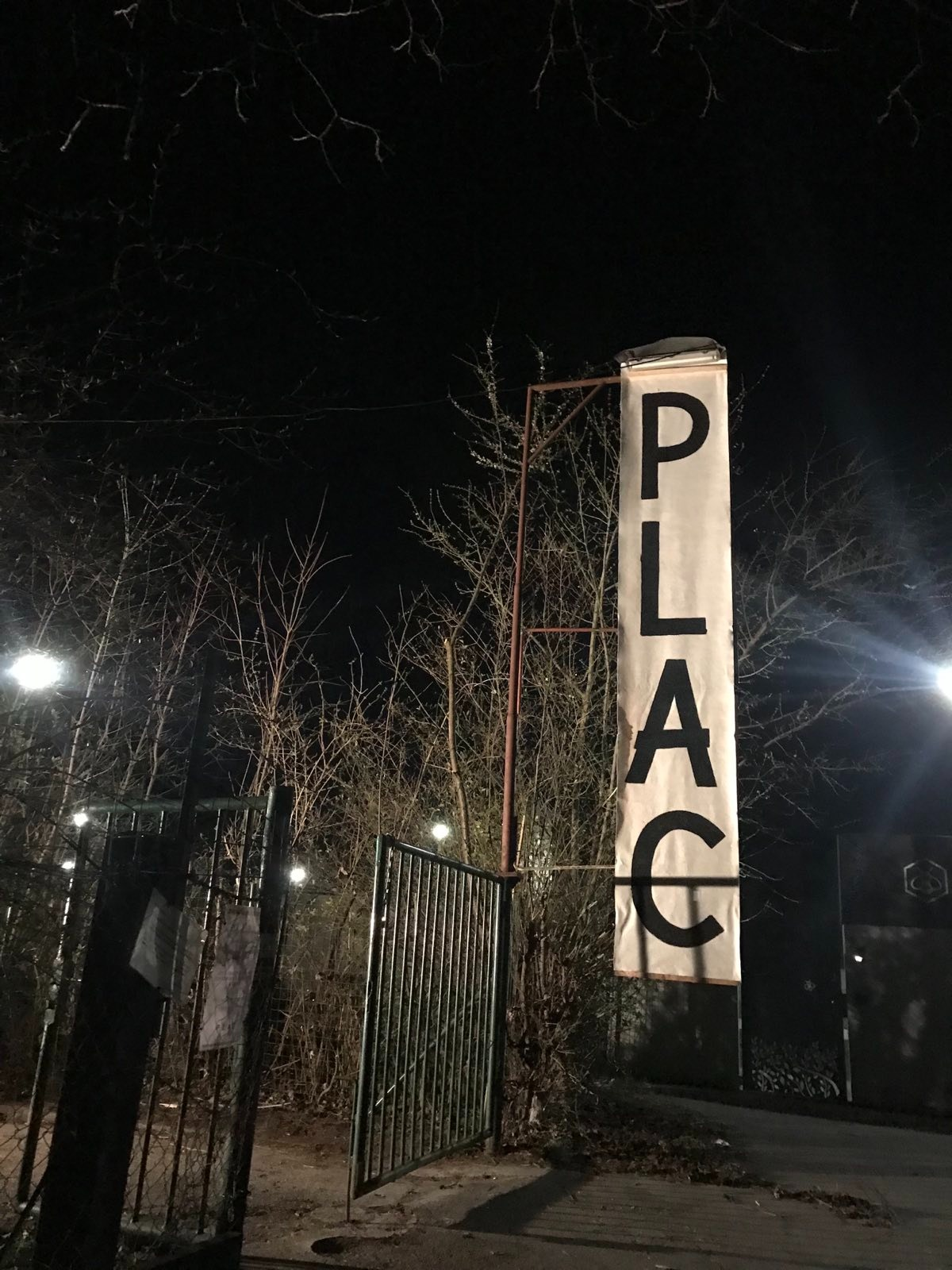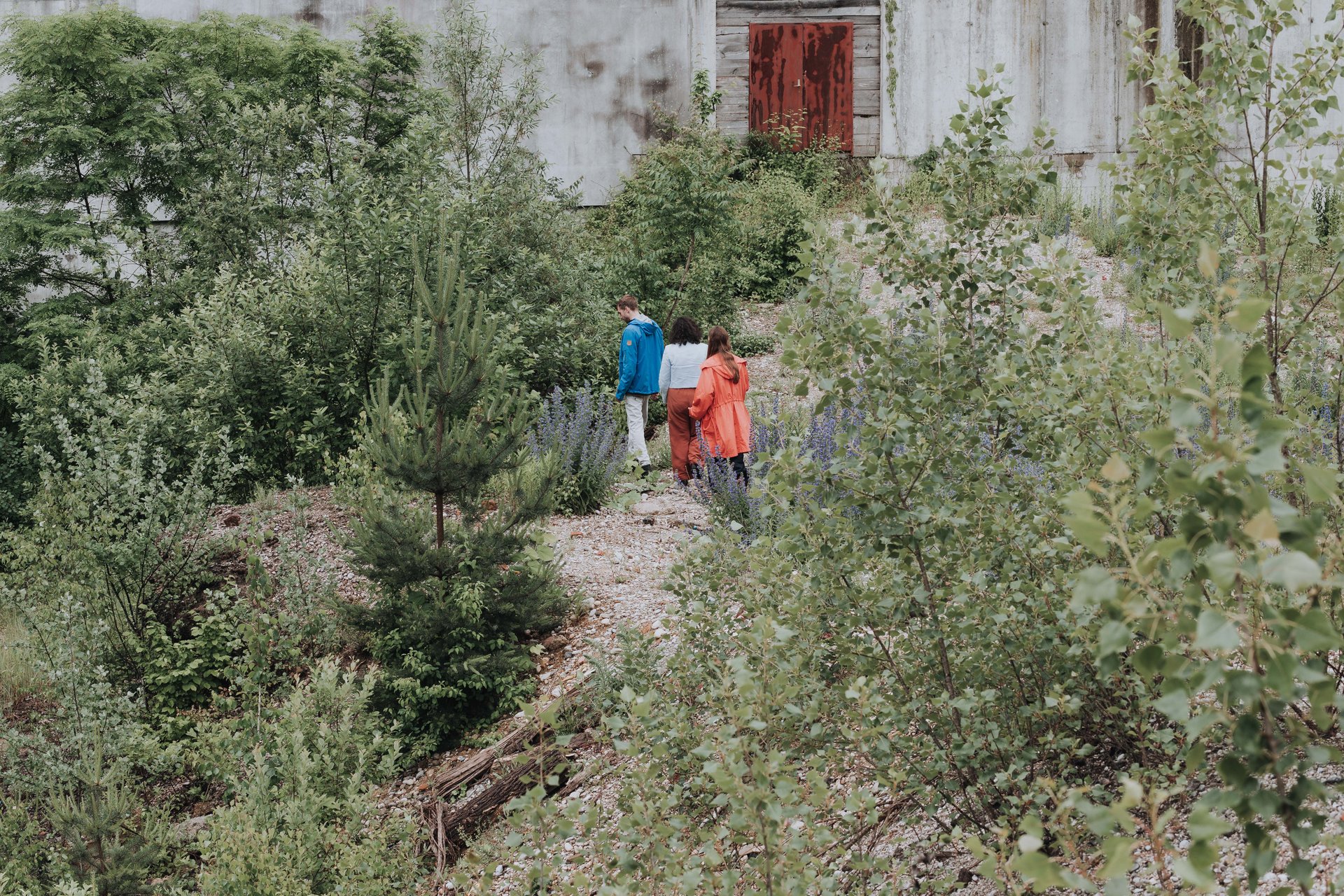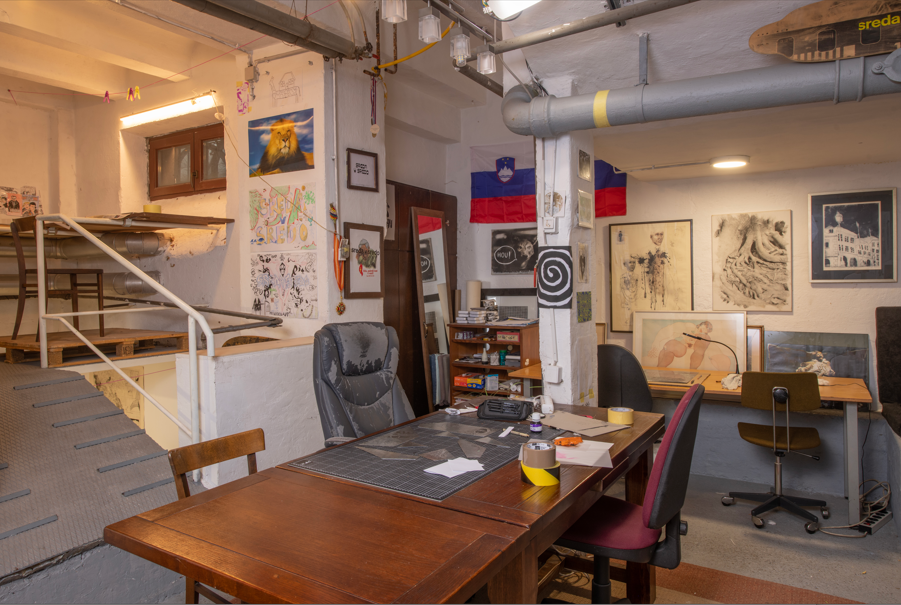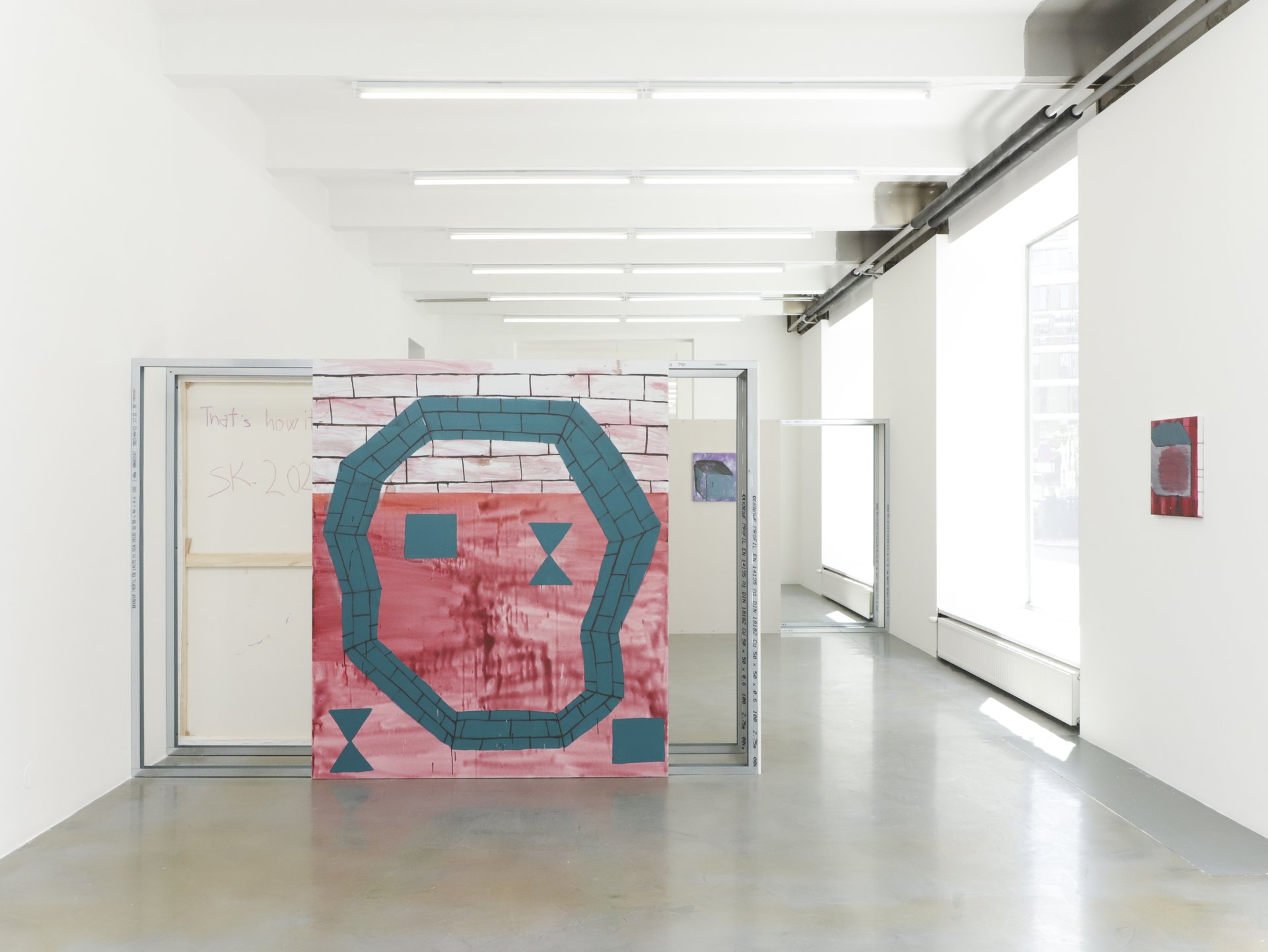From the void came gifts of the cosmos
Artistic Director: Ibrahim Mahama
Curators: Exit Frame Collective, Alicia Knock, Selom Koffi Kudjie, Inga Lāce, Beya Othmani, Patrick Nii Okanta Ankrah
Joining artistic director of this year’s Biennale Ibrahim Mahama, curators Exit Frame Collective, Alicia Knock, Selom Koffi Kudjie, Inga Lāce, Beya Othmani and Patrick Nii Okanta have been invited to respond to the Biennale’s theme, guided by the chosen title. Alongside the participating artists, this complex council of curatorial entities synchronously imagines the Biennale as a void and a site of potential, and as an ecosystem of friendships and solidarities, unearthed histories of resistance, liberation and transnational relations beyond the centre-periphery framework that holds the possibility of transforming the void into gifts of the cosmos. The void, in this context, suffices as an egalitarian framework out of which multiplicities emerge, while also operating as a site of artistic indeterminacy in the spirit of inclusion.
The curatorial direction is inspired by Mahama’s long-term interest in the promise of the affirmative and emancipatory politics of Ghana’s first president, Pan-African theorist Kwame Nkrumah. It was his post-independence vision that inspired the creation of the intellectual, cultural, scientific and economic infrastructure that defined Ghana’s first republic between 1960 and 1966. This vision was also expressed in the form of Non-Aligned collaborations culminating in the co-formation of the Non-Aligned Movement. The work of architects, designers, structural engineers and urban planners from the former Yugoslavia, Hungary, Poland and the German Democratic Republic, among others, working on institutional buildings in Ghana was typical of the Socialist Internationalist cooperative models during this post-war period.
From the void came gifts of the cosmos reflects on the entanglements of built environments, infrastructures and materials with the modern histories of anti-colonial and anti-imperial struggle, nationalism, internationalism and their contemporary echoes. Examining the ways in which the revolutionary spirit of the post-Afro-Asian independence era permeated built structures, the Biennale anchors its inquiry into the residues of this ethos. What forms of life do these infrastructures inhabit today? How can the Biennale become fertile ground for thinking about future, past and present relationships between the bodies and territories mediated, transformed and/or policed through architectural forms? Can the void created by past political failures serve as the soil for nurturing different relationships based on solidarity, friendship and intimacy? The ecological disposition of this Biennale embraces synthetic, virtual, mechanical, biological, discursive and other contingent forms of artistic determinations.
The history of the Ljubljana Biennale, founded in 1955 amid the Cold War, mirrors a similar internationalist spirit. From its inception, it has invited participants from the Non-Aligned partner countries in Africa and Asia, in addition to artists from the Soviet Union and the West with a special emphasis on the former. Thus, the Biennale’s archive serves as a journal revealing traces of other important gatherings and workshops in printmaking, and other mediums such as film. The forthcoming edition of the Ljubljana Biennale of Graphic Arts will attempt to look back at how visual culture and its dissemination and circulation created spaces of potentiality. Spaces that transcended borders and enabled these networks of Southern solidarities.
The main programme includes an exhibition with site-specific commissions across multiple venues including MGLC Tivoli Mansion, Cukrarna and MGLC Švicarija, to name a few.
Curated by Exit Frame Collective, the biennale’s public programme Agyina: Advisory of Sages will constitute an assembly of educational, relational and ephemeral situations such as film screenings, symposia, bodily performances (theatre, dance, etc), musical concerts, exhibition tours, workshops (practical and discursive), unannounced exhibitions in the public spaces of Ljubljana, and more. Agyina is a concept borrowed from the Akan (Ghana's largest ethnic group) notion of council, and it speaks to the fact that it takes more than one voice to have a meaningful discussion or debate. Agyina: Advisory of Sages aligns with the curatorial premise of the 35th Ljubljana Biennale of Graphic Arts in exploring the Biennale as “a void and site of potential”, conjuring a cosmos of forms, solidarities, futures, resistances, and transnational relations that go beyond the inegalitarian centre-periphery dynamics of empire and domination.
For the 35th edition, students from local art schools have been invited to form collectives and work on new commissions, and a complementary reader will be published in autumn 2023 to further expand the notions and histories explored by the curatorial ensemble.
Ibrahim Mahama
Visual artist Ibrahim Mahama was born in 1987 in Tamale, Ghana. He lives and works in Accra, Kumasi and Tamale. His work has appeared in numerous international exhibitions, including the Venice Biennale, the Biennale of Sydney, Saatchi Gallery in London, K21 in Dusseldorf, the Eli and Edythe Broad Art Museum in Michigan, the Tel Aviv Museum of Art in Israel and many others.
Mahama’s best-known works involve draping entire buildings with a patchwork of reused jute sacks. He repurposes cocoa sacks that he finds in local markets in Ghana. He shows his works in Ghanaian markets as well as galleries. Through his choice of exhibition spaces, his works critically reflect on the value system inherent to these materials.
Represented by one of the world’s leading international galleries, White Cube (London /Hong Kong) and Apalazzo Gallery in Brescia Italy. Mahama uses proceeds from his art practice to initiate and support cultural and educational institutions in Ghana. He is creating ways to keep contemporary African art on the continent. In 2019, he opened the artist-run project space Savannah Centre for Contemporary Art (SCCA Tamale) in Tamale. Later, he opened a vast studio complex, RedClay, in nearby JannaKpeŋŋ in 2020. Both sites represent Mahama’s contribution to developing and expanding the contemporary art scene in his home country, encompassing exhibition space, research facilities, and an artist-residency hub. In 2021, Mahama transformed an abandoned silo in Tamale into the Nkrumah Voli-ni, a public space that combines ecological with artistic forms.
Exit Frame Collective
Exit Frame emerged as a collective in 2012 after years of friendship, informal conversations and collaborations between its five members, who are all based in Ghana: Adwoa Amoah, Ato Annan, Bernard Akoi-Jackson, Kelvin Haizel and Kwasi Ohene-Ayeh. The group operates within the surplus of the collision between art and pedagogy. Within this surplus is where the collective tests out what possibilities of emancipation art as such offers a native of the 21st century. For the collective, art exists as the starting point for asking broader questions about material and immaterial universes. Exit Frame curated the group exhibition Of Materials and Things (2021) and co-organised the 11-day festival Pile au Rendezvous with La Condition Publique as part of Saison Africa 2021 in France. Besides individual and networked projects spanning the fields of new materiality, pedagogy, curating, art administration, and artisanship – both in Ghana and abroad – Exit Frame inaugurated the annual peer-led pedagogical project and inoperative art school called CritLab in 2020 as part of its efforts to expand the critical intellectual infrastructure of professional art practice in Ghana. Presently in its fourth year, CritLab is a combined residency and professional development programme designed for artists, critics and curators from Africa and other parts of the world.
Alicia Knock
Curator at the Centre Pompidou since 2015 and new head of Contemporary Art and Research, Alicia Knock has been highlighting an inclusive, global and post-colonial art history, through both acquisitions and exhibitions.
At the Centre Pompidou, she curated multidisciplinary exhibitions (Harmony Korine, 2017; Museum On/Off, 2016) and historical shows (Ernest Mancoba, 2019), Marcel Duchamp Prizes (2016-2017) as well as exhibitions open to the Global South (China/Africa, 2020; Global Resistance, 2020). She has invited various artists and collectives to interact with the institution itself (Afrikadaa, Chimurenga) and to take part in the video programme "Prospectif Cinema".
Working at expanding the Museum's collection towards Africa and Central & Eastern Europe, she also curated the Albanian Pavilion at the Venice Biennale (2019), and exhibitions at Bandjoun Station in Cameroon (2018), Pinchuk Art Center in Kiev (2019) and the National Gallery of Kosovo (2020).
Inga Lāce
Inga Lāce is C-MAP Central and Eastern Europe Fellow at MoMA, New York. She is researching modern and contemporary art in Soviet and Post-Soviet Eastern Europe, Caucasus and Central Asia, as well as its diaspora. She focuses on migration and transnational connections across regions, legacies of politics of friendship and international solidarity. She has been curator at the Latvian Centre for Contemporary Art since 2012 and curator of the Latvian Pavilion at the Venice Biennale 2019 with the artist Daiga Grantina (co-curated with Valentinas Klimašauskas). She has also been co-curator of the Allied – Kyiv Biennial 2021 (as part of the East Europe Biennial Alliance) and co-curator of the 7th–10th editions of the contemporary art festival SURVIVAL KIT. She has curated exhibitions at the Malmö Konstmuseum, Muzeum Sztuki, Łódź, Framer Framed, Amsterdam, James Gallery at CUNY, New York, Villa Vassilieff, Paris, and is currently co-curator of the New Visions Triennial for Photography and New Media at Henie Onstad Kunstsenter, Oslo.
Beya Othmani
Beya Othmani is a Tunis-based independent art curator and researcher. Her work focuses on exhibition histories, the construction of racial identities in the arts and state-led exhibition-making practices in colonial and post-colonial Africa. She is also a member of Archive Sites, a platform for publishing and cultural research, where she co-curates the programme Publishing Practices, an ongoing inquiry around the production and dissemination of printed matters and a learning site for radical publishing. She co-curated the exhibition and residency programme This Bridge Can Get Us There at Archive Sites Berlin in 2021, which looked at the potential of publishing as a subversive and emancipatory practice through the prism of transnational feminist methodologies and anticolonial thought. In 2021, she curated Alger Insolite, an online programme, as part of a research project on African photography initiated by Untitled Duo and the Rencontres Photographiques d'Arles. Alger Insolite was thought of as an open conversation around the politics of space and their entanglement with the image, taking the neighbourhood of Algiers-center as an entry point. In March 2020, she co-curated the Sonsbeek Council #1 in Tunis on labour and its sonic ecologies. Previously, she was a member of the Berlin-based art space SAVVY Contemporary, where she co-produced the event series Listening Session: Untraining the Ear and the Untraining the Ear festival. She has been part of the curatorial team of various exhibitions, including The Dog Gone Death at Dak’Art 13 Biennale (2018) and Shadow Circus for the Forum Expanded of the Berlinale (2019). She is currently a recipient of the CAORC/Andrew Mellon Art History fellowship.
Selom Koffi Kudjie
Selom Koffi Kudjie is an artist and curator based in Kumasi and Tamale, Ghana. His interest in drawing as form has led him to explore the medium in various ways: from conceptual and relational approaches to human-machinic labour raised by technological objects. Kudjie co-curated the trilogy exhibitions organised by blaxTARLINES KUMASI at the Museum of Science and Technology in Accra (2015, 2016, 2017). He is Artistic Director of the Savannah Centre for Contemporary Art in Tamale and is currently a PhD student at the Kwame Nkrumah University of Science and Technology (KNUST).
Patrick Nii Okanta Ankrah
Patrick Nii Okanta Ankrah is a curator and artist working in Tamale and Accra, Ghana. His practice is concerned with art as a “zero point” that fuses various spheres of life. He sees art as a way of creating life and not just remaining in a symbolic state. One of the ways in which he does this is through an interdisciplinary approach to exhibition-making, involving people and banal facets from various aspects of life, which do not seem like art. He uses “objects” like love, sharing and care as a starting point for art-making. Nii Okanta has been part of the curatorial programming of blaxTARLINES, co-curating a trilogy of exhibitions between 2015 and 2017 at the Museum of Science and Technology in Accra. He is currently stationed at SCCA Tamale, assisting with curatorial programming and curating a retrospective of Prof. Alhaji Yakubu Seidu Peligah as well as other projects.
Biennale Project Group:
Artistic Director and CEO of the International Centre of Graphic Arts: Nevenka Šivavec
Head Manager and Deputy CEO of the International Centre of Graphic Arts: Yasmín Martín Vodopivec
Head of production: Božidar Zrinski
Head of Communication Programmes: Lili Šturm
Advisor: Jo-Anne Birnie-Danzker
Design: Ajdin Bašić
Artists
Anita Afonu
Sadik Kwaish Alfraji
Yasmina Benabderrahmane
Assadour Bezdikian
Max Cegielski and Janek Simon
Virginia Chihota
Galle Winston Kofi Dawson
Nolan Oswald Dennis
Nabil Djedouani
(DNLM) Danilo Milovanović
Jihan El Tahri
El Warcha in dialogue with PLAC – Participatory Ljubljana Autonomus Zone
Beti Frim and Ines Sekač
Helga Griffiths
Christian Guerematchi
Eric Gyamfi
Sonia Kacem
Mohammad Omar Khalil and Abed Al Kadiri (in dialogue)
Soghra Khurasani
Kolektiv Krater / Krater Collective
Kvadratni meter / Square Meter
Lalitha Lajmi
Malle Leis
Silvi Liiva
Kagiso Patrick Mautloa
Raul Meel
Amina Menia
Yussif Musah
Medhat Nasr Ali
Ilona Németh
noks collective
Nonument Group
NPR.
Henry Obeng
Temitayo Ogunbiyi
Thierry Oussou
Krishna Reddy
Tjaša Rener
Martyna Rzepecka
Duba Sambolec
Jaanus Samma
School of Mutants (Hamedine Kane, Stéphane Verlet-Bottéro)
Mori Sikora
Aldona Skirutyte
Sanaz Sohrabi
Tejswini Narayan Sonawane
Selasi Awusi Sosu
Sreda v sredo (SVS)
Tracy Naa Koshie Thompson
Marje Üksine
Tõnis Vint
Ala Younis
Lara Žagar
Manca Žitnik
News
The Sreda v sredo group receives the Audience Award
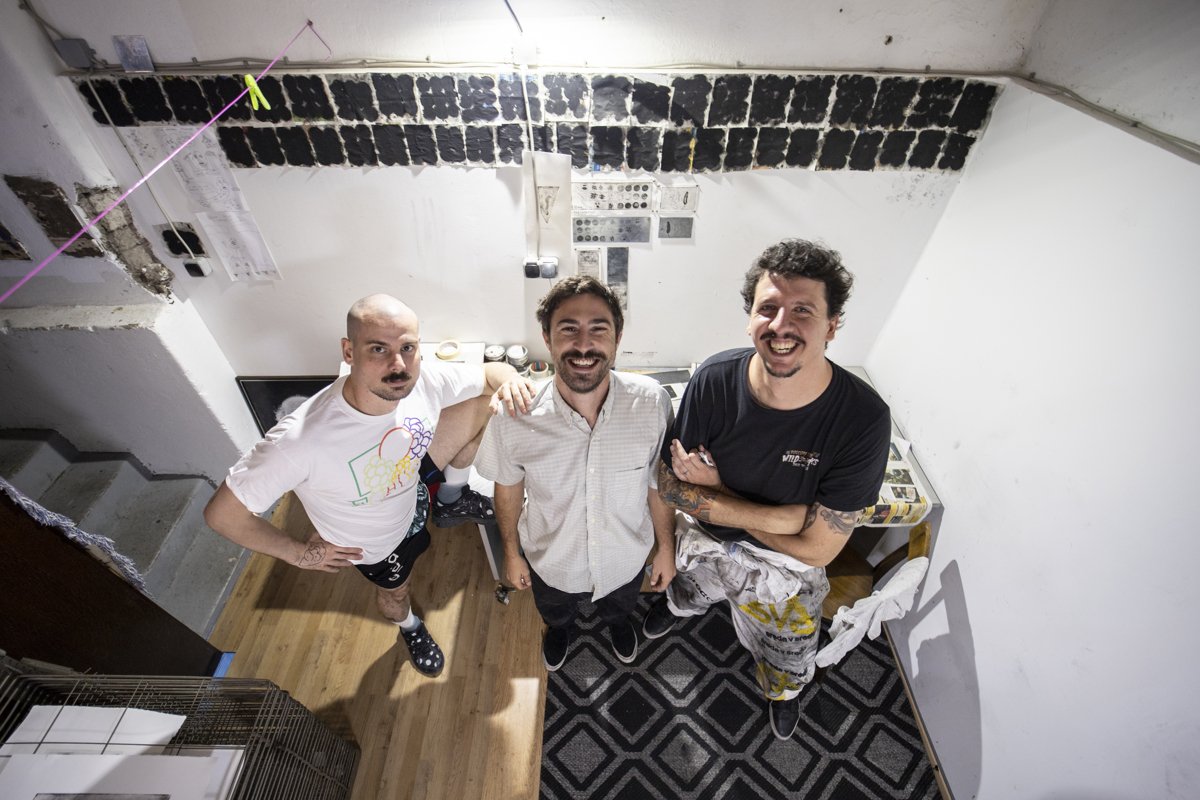
The Ljubljana Biennale of Graphic Arts has a long tradition of awarding prizes, dating back to the first edition of the Biennale in 1955. Since 2013, the Audience Award has also been included among its prizes. The Audience Award of the 35th Ljubljana Biennale of Graphic Arts went to the Sreda v sredo group, which is showing its art prints at this year's edition of the Biennale at MGLC Grad Tivoli, while its studio in Štefanova ulica is also one of the Biennale venues.
35th Ljubljana Biennale of Graphic Arts concludes in January with a varied programme
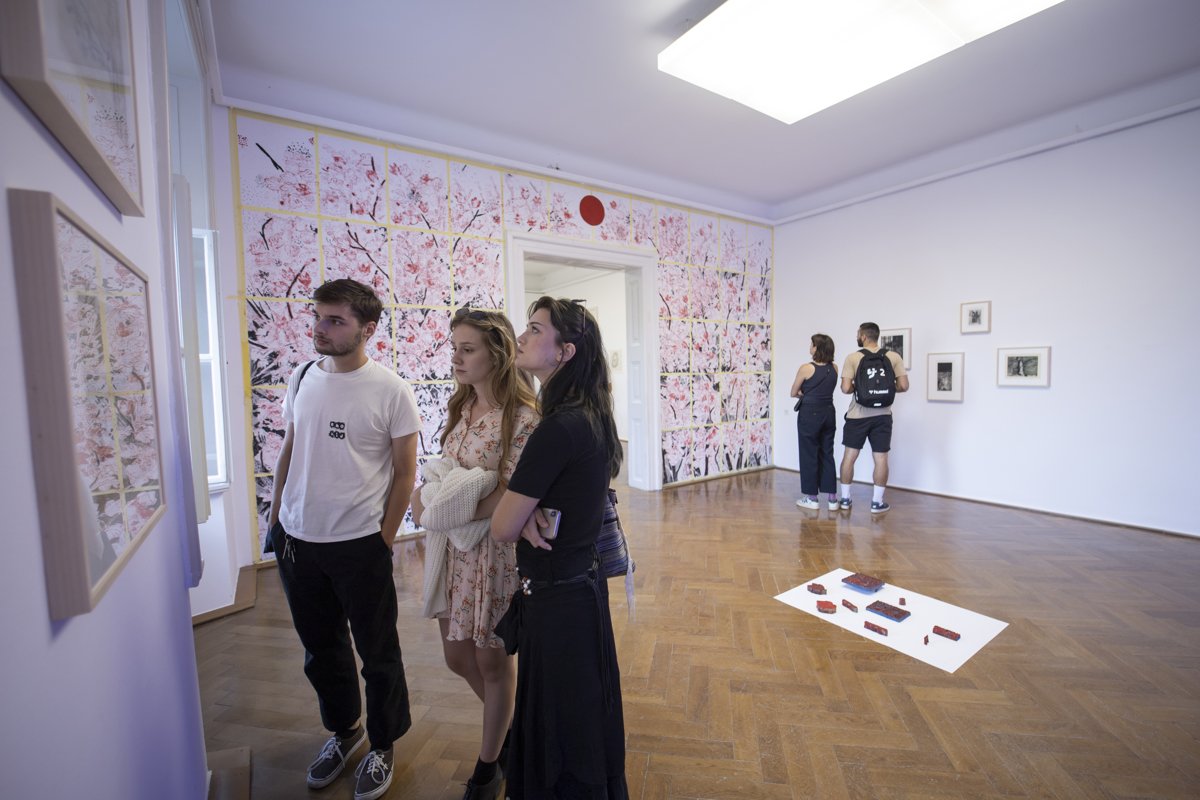
On Sunday, 14 January, the 35th Ljubljana Biennale of Graphic Arts comes to a close. As part of the closing days, we are organising a varied programme including guided tours, a public lecture, a workshop and an exhibition.
Events
Locations and Admission
MGLC Grad Tivoli
Pod turnom 3, Park Tivoli, 1000 LjubljanaTuesday–Sunday: 10.00–18.00
24 and 31 December: 10.00–16.00
Closed: Mondays, 25 December and 1 January
MGLC Švicarija
Pod turnom 4, Park Tivoli, 1000 LjubljanaTuesday–Sunday: 10.00–18.00
24 and 31 December: 10.00–16.00
Closed: Mondays, 25 December and 1 January
Cukrarna
Poljanski nasip 40, 1000 LjubljanaTuesday–Sunday: 10.00–18.00
24 and 31 December: 10.00–16.00
Closed: Mondays, 1 November, 25 December and 1 January
PLAC – Participatory Ljubljana Autonomous Zone
Linhartova 43, 1000 LjubljanaPLAC is open every day from at least noon till midnight.
People's canteen is open every Thursday and Saturday at 4 pm.
Krater, Creative laboratory in a construction pit
Entry from Peričeva ulicaon Tuesdays and during events
Summer opening hours: afternoons until the beginning of November, 16.00–18.00
Winter opening hours: mornings from November to January, 10.00–12.00
Closed on 31 October, 26 and 31 December and 2 January
RAVNIKAR GALLERY SPACE
Vošnjakova ulica 4The Exhibition of the Grand Prize Recipient of the 34th Ljubljana Biennale of Graphic Arts (15. 9.–12. 11. 2023)
Tuesday–Sunday: 10.00–18.00
13 EUR
19 EUR (at least one adult and one child from 6 to 18 years of age)
8 EUR (pupils, students, senior citizens, ICOM, AICA, SMD, ZDSLU members, Erasmus students with ESN Card)
at least 5 people: 10 EUR (adults) / 8 EUR (school groups)
preschool children, visitors with disabilities, Friends of the Biennale Club members, KUL abonma subscription holders, URBANA Tourist Card holders, journalists, CIMAM, IBA
Tickets are on sale at MGLC Tivoli Mansion (Pod turnom 3), MGLC Švicarija (Pod turnom 4) and Cukrarna (Poljanski nasip 40).
Tickets include the following exhibition venues: MGLC Tivoli Mansion, MGLC Švicarija, Cukrarna.
INFO POINT
MGLC International Centre of Graphic Arts – MGLC Tivoli Mansion, Pod turnom 3, Tivoli Park
Contact and press
International Centre of Graphic Arts - MGLC
Grad Tivoli, Pod turnom 3
SI-1000 Ljubljana
+386 (0)1 241 3800
info@mglc-lj.si
Slovenian Press:
press@mglc-lj.si
International Press:
yaz@pelhamcommunications.com
Newsletter
International Centre of Graphic Arts
Grad Tivoli, Pod turnom 3
SI-1000 Ljubljana, Slovenia
t: +386 (0)1 241 3800
